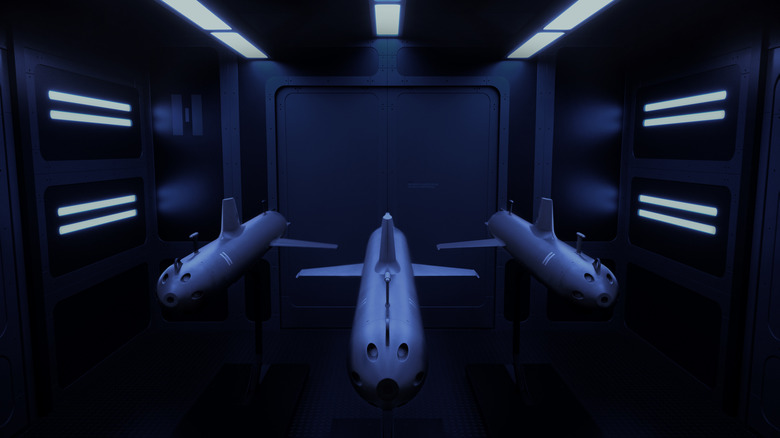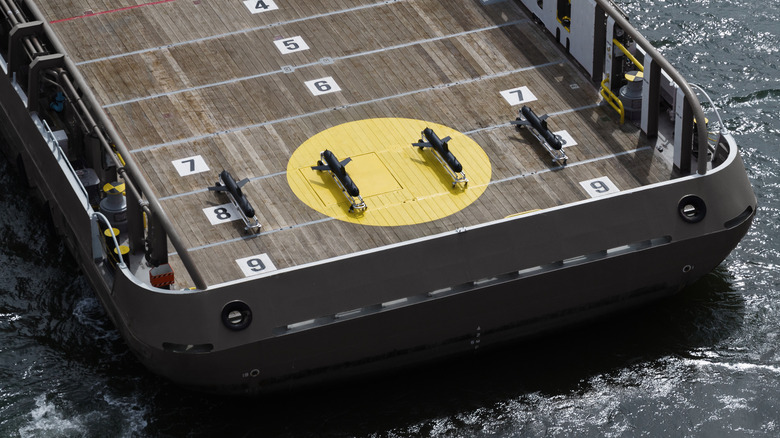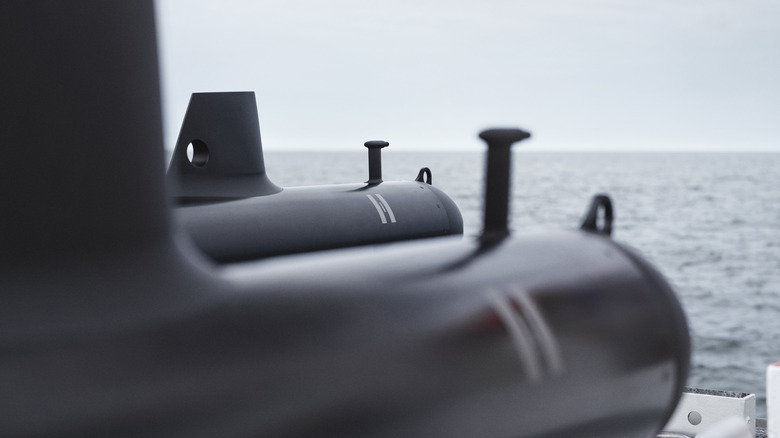These Underwater Drone Gliders May One Day Help Protect Europe's Seas
Drones are quickly becoming a mainstay in naval warfare, which is perhaps best exhibited by Ukraine's use of sea drones to sink Russian ships in the Black Sea without a conventional navy. Drones have morphed into a cheap, effective alternative for countries looking to level the battlefield against large naval powers. One trend spurring this change above and below the surface is deploying artificial intelligence to enhance military drone capabilities, making the technology more effective and easier to deploy. This increase in capability has made drones an interesting vector for European lawmakers looking to ramp up defense infrastructure amidst waning American support and an increasingly aggressive Russia. Some proponents have even suggested that Europe build a "drone wall" of 100,000-plus aerial and naval drones to ward off potential attacks.
One company looking to capitalize on this increased fervor is the German startup Helsing, which works to bring advanced AI tools to the battlefield. Of particular note is the SG-1 Fathom, an underwater autonomous drone powered by Helsing's proprietary AI model, Lura, to monitor and attack subsurface threats. Introduced in May 2025, the glider is one of a suite of AI-powered weapons systems that the German company hopes to roll out in the coming years. Valued at €12 billion, with investors like Spotify co-founder Daniel Ek, Helsing looks to play a major role in Europe's upcoming investments in military preparedness. The startup is, however, just one of the countless companies swarming toward Europe to capitalize on a reinvigorated defense architecture forced to scale its size and capabilities.
An AI-powered sea glider
The SG-1 Fathom is a glider Helsing hopes will "redefine subsurface surveillance." At 6 feet 5 inches long and just over 130 pounds, the glider can operate for up to three months at up to 2 knots per hour. An autonomous vehicle, Helsing's SG-1, is powered by the company's underwater surveillance AI, Lura. Unlike the large language models most are familiar with, Lura is described by Helsing as a large acoustic model, meaning it is trained to process and recognize acoustic signatures through terabytes of underwater sound data. Through Lura, the glider classifies and locates unique sound patterns from ships and submarines. It can detect acoustic sound signatures 10 times quieter than its competitors and processes signatures 40 times faster than human operators. Furthermore, users can deploy the SG-1 in patrol swarms or at posts along the seabed, with a single sea- or land-based operator monitoring over a hundred gliders at once. The gliders, which Helsing compares to a satellite constellation, are capable of operating at various sea depths and use mobile sensors to 'digitize' and analyze large bodies of water. Helsing aims to deploy its SG-1 by the end of 2025.
Currently, the gliders are in a testing and development stage, operating from Helsing's newly established factory in Plymouth, United Kingdom. To scale production, the company partnered with Ocean Infinity, Blue Ocean Marine Tech Systems, and QinetiQ to improve everything from its maritime robotics to autonomous data collection and integration processes. Although no buyers have been announced, Helsing states that several navies are interested in the SG-1.
Helsing's place in a re-armed Europe
The SG-1 glider is only one of Helsing's several AI-powered defense systems. Ukraine has ordered 10,000 drones from the German firm, including 6,000 of its HX-2 strike drone. As a swarm-capable, multi-purpose X-wing precision munition drone, the HX-2 can engage military targets up to 60 miles from its operator. It
uses an onboard AI system to ward off electronic defense systems, enabling it to strike targets even when taken offline. Other AI-powered Helsing products include Cirra, a software system meant to combat anti-aircraft radar, and Centaur, an AI agent enabling unmanned aerial combat.
Helsing hopes that this suite of AI solutions can capitalize on Europe's recent willingness to increase military spending.In March 2025, the European Commission presented its ReArm Europe Plan, which hopes to mobilize over €800 billion in military spending, including €150 billion in defense loans for its members. This accelerates Europe's half-decade rearmament push, which has seen defense spending rise by 30% since 2021. Helsing's home country, Germany, is at the forefront of this spending push, with Chancellor Friedrich Merz announcing Berlin would increase its defense spending to 3.5% of its GDP by 2029, almost tripling its yearly spending to between €153 and €162 billion.
Helsing believes it is in a position to capitalize on this moment due to its position at the junction of two key defense trends: drones and AI. But the company will see stiff competition in this rapidly developing field. Major AI companies like OpenAI and Anthropic, for example, have announced partnerships with military contractors Anduril and Palantir, respectively. Several German companies will look to enter the fray, as the government looks to speed up procurement and open competition to new firms. Whether the SG-1 Fathom will elevate Helsing above the competition may prove the defining question of its rapid rise through the European defense landscape.


